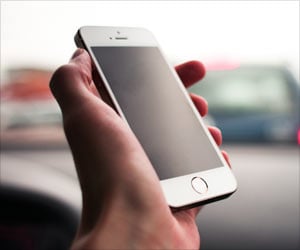Sensors printed on the skin may now help skin healing in patients with skin disorders or may just help you charge your phone battery, finds a new study.

‘A soldier could pull this printer out of a backpack and print a chemical sensor or other electronics they need, directly on the skin. It would be like a 'Swiss Army knife' of the future with everything they need all in one portable 3D printing tool said Michael McAlpine.
’





A low-cost 3D printer was used to print electronics on a real hand for the first time. The technology can be used by soldiers on the battlefield to detect chemical or biological agents or solar cells to charge essential electronics.Researchers also successfully printed biological cells on the skin wound of a mouse. The technique could lead to new medical treatments for wound healing and direct printing of grafts for skin disorders.
"We are excited about the potential of this new 3D-printing technology using a portable, lightweight printer costing less than $400," said Michael McAlpine, the study's lead author and the University of Minnesota Benjamin Mayhugh Associate Professor of Mechanical Engineering. "We imagine that a soldier could pull this printer out of a backpack and print a chemical sensor or other electronics they need, directly on the skin. It would be like a 'Swiss Army knife' of the future with everything they need all in one portable 3D printing tool."
One of the key innovations of the new 3D-printing technique is that this printer can adjust to small movements of the body during printing. Temporary markers are placed on the skin and the skin is scanned. The printer uses computer vision to adjust to movements in real-time.
"No matter how hard anyone would try to stay still when using the printer on the skin, a person moves slightly and every hand is different," McAlpine said. "This printer can track the hand using the markers and adjust in real-time to the movements and contours of the hand, so printing of the electronics keeps its circuit shape."
Advertisement
To remove the electronics, the person can simply peel off the electronic device with tweezers or wash it off with water.
The team successfully used a bio-ink to print cells on a mouse skin wound, which could lead to advanced medical treatments for those with skin diseases.
"I'm fascinated by the idea of printing electronics or cells directly on the skin," McAlpine said. "It is such a simple idea and has unlimited potential for important applications in the future."
Source-Eurekalert









